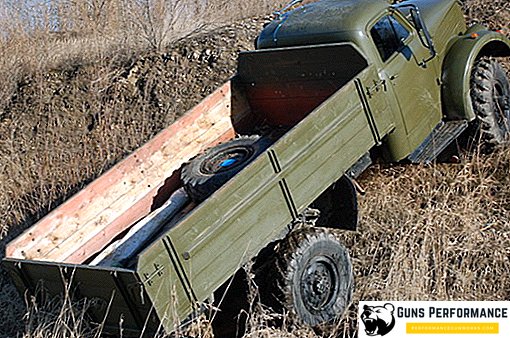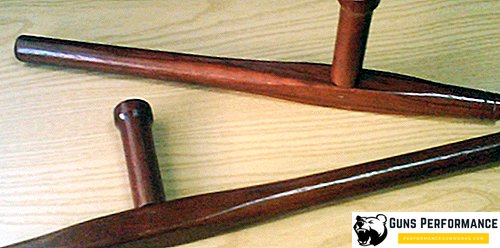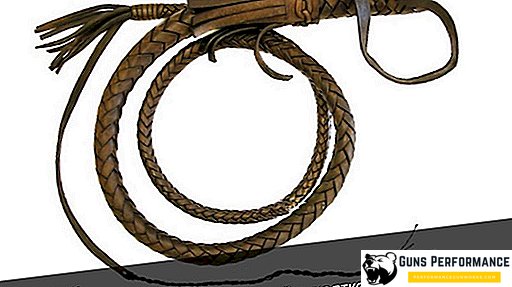
Whip arapnik is the main tool of the shepherd and nomad. Mandatory attribute rider and equestrian hunter. In the form of a whip was an element of the equipment of the Cossack. Arapnik is used even now as a weapon of self-defense, although the modern school of combat with the use of nagak represents little, for which the whip was used first of all.
The history of the appearance of pests
When the first whips appeared it is hard to say. It is known for certain that the history of nomadic peoples engaged in cattle breeding is closely connected with the appearance of whips. Each steppe warrior had his whip arapnik. In Europe every rider had a whip; a shepherd also could not imagine his work without a long scourge.
Steppe peoples (Kazakhs, Kirghiz, Mongols) used the whip in friendly fights at various holidays. It was necessary to have great dexterity to avoid completely not friendly blows of the whip. The horse competitions with the scourge in fights are still preserved.
The scourge was spread all over the world; people with whips in their hands are depicted on the ancient frescoes of Egypt. After the discovery of America, the shepherd's whip moved to the place where it continues to be used for its intended purpose. Most likely, even in Okinawa, they used a kind of whip, although this was not mentioned in historical documents. But in China, many have used their long braids as a weave, weaving iron balls into them.
The use of whips among the nomadic peoples
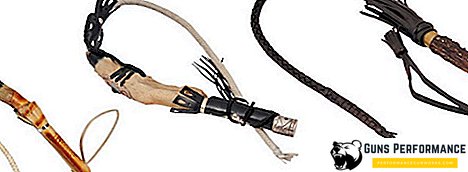
In the legends and tales of nomadic peoples, whips are constantly mentioned. Arapniki and pests used by hunters and shepherds. Warriors enjoyed the whip. Kyrgyz were very popular "naked bout" when naked riders with whips tried to knock each other out of the saddle. All are divided into teams and, as in a real battle, help each other. The use of the whip brought up the ability of the Kyrgyz soldiers to fight with any object at hand. The Chinese in the second century BC experienced the lashes of the Kirghiz.
The steppe warriors developed a lash strike system in which they focused on strikes on pain points. Moreover, the blows were struck not only with the lash itself, but also with the handle. In folklore, there is often a special blow to the head, from which "the head flew off the shoulders." True or not, it is difficult to say now, but even now an experienced shepherd can kill the wolf with one lash.
Scourge in the age of antiquity
The surviving works of Greek historians convey to us interesting facts about the use of lashes. In addition to using whips to punish the guilty slaves, the Greeks, noticing how the Scythians skillfully manipulate arapniki, hired them as caretakers. Several wild Scythians with lashes quickly dispersed the crowd, exceeding them tenfold. At the same time, the whip was a more humane weapon than the modern batons of the riot police.
The tactics of fighting the nomadic tribes of that era looked like this:
- At first, opponents bombarded each other with bows;
- Then spears went into battle;
- Swords and axes were used in close combat (daggers were used as a last resort).
Since the swords of those times were short, where there was no turning with a spear, whips were used. The blows of the whip impacted not so much the enemy as it did on the enemy's horses. The sharp blows of the scourge not only knocked out the eyes, but also tore the clothes and skin. It was the scourge that influenced the development of full Sarmatian armor, since flexible weapon strikes were unpredictable, and it was not always possible to hide from them behind a shield. The famous warriors of that era beat arrows and darts with an aprnik. If at a long distance, the warriors of the steppes used arcana, then in the short they were successfully replaced with whips. With a nimble blow it was possible to snatch an ax or sword from the hands of the enemy. Some warriors became so intimate with the whips that they could use them as a sling.
Whip and its use
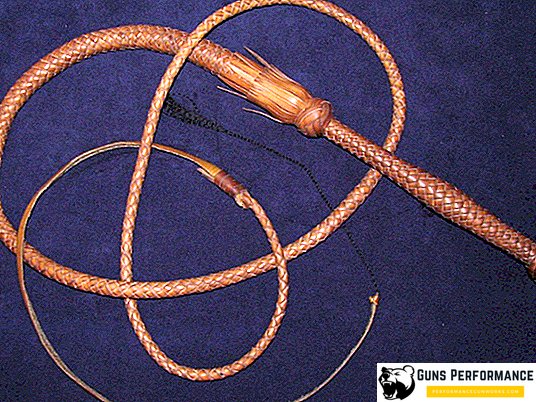
The Gypsies were especially famous for their use of the whip. A blow with a whip, directed by a skilful hand, easily knocks a person down. In Tsarist Russia, whip was used for corporal punishment. Twenty whip strokes were considered deadly, as the whip tore the meat to shreds. An experienced executioner with a whip could kill the ridge. Knowing this, the relatives of the punished carried the executioner gifts with the request to hit lightly.
Lash and its varieties
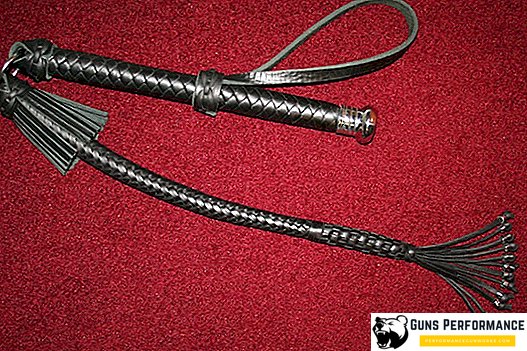
Later, the battle whip evolved into a whip and arapnik. The most popular type of arapnik in our time is a whip. The appearance of this name is associated with the word "Naga", which means a snake. There were many kinds of nagak, each master added some features of his own. These lashes are called differently, depending on the place of manufacture.
- Don leash;
- Kuban whip;
- Ural whip;
- Arapnik;
- Volchatka;
- Tatar whip;
- Belt whip.
The most common are the Don and Kuban whips.
Cossacks, whose martial art is a legacy of steppe warriors, often used a whip in battle. Just do not rely on the words of some modern "masters" of the Cossack battle, who claim that the whip was a super weapon, and the Cossack with it could easily put five people. In battle, whip was used as a last resort, when all weapons were broken or lost. Basically, with a whip, shocking blows were made to the face in order to break through and gallop off. There were virtuosos who could pull the enemy with a whip from a horse or inflict fatal wounds, but these are isolated cases. Yes, and why learn to attack the fight, when the Cossack had a rifle, a sword, a peak, and in case of emergency, a dagger? The whip was used for corporal punishment, and it was a symbol of the power of a married Cossack.
Difference Don Don from Kuban
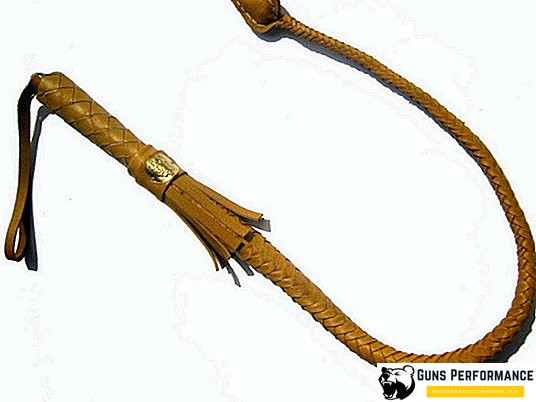
Don whip is different from the Kuban whip by the presence of a connecting ring between the stick and the whip. Thanks to this feature, the blow is sharper and faster.
The Kuban type is shorter, and the handle is woven into the lash itself, and visually the place of the joint is not visible. The handle is often decorated with fringe and various decorative elements.
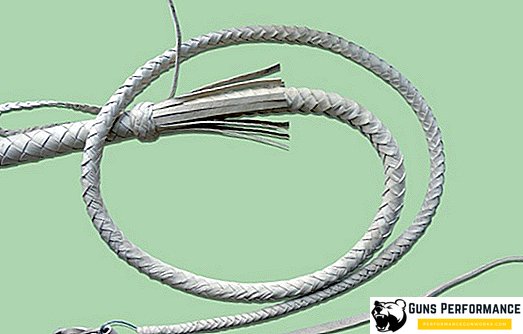
Arapnik Weave
Whip weaving can occur in various ways, but all of them can be divided into two large groups:
- Weaving with vitnem (core);
- Normal weaving without core.
The advantages of the first method are a stronger blow, such whips are most often used for hunting or combat. Their main disadvantage is the lack of flexibility. Ordinary lashes are flexible, but the blow is much weaker. Often this disadvantage is compensated by a small weight in a slap.
The oldest weaving technique is the serpentine. Scourge, woven by this method, resembles a pattern of snake scales. Handles for whips cut from fruit trees, at the end there is a ball that serves for the grip. The handle is woven with leather straps. The more belts, the better the whip will turn out, but it will be harder to weave it.
To weave the arapnik with a stitch, you will first need to make this core. In modern conditions it is best to use a kapron line for this purpose. Such a core will be much stronger and more elastic than traditional leather. With the help of electrical tape, the sling is attached to the handle, after which it is woven over with leather.
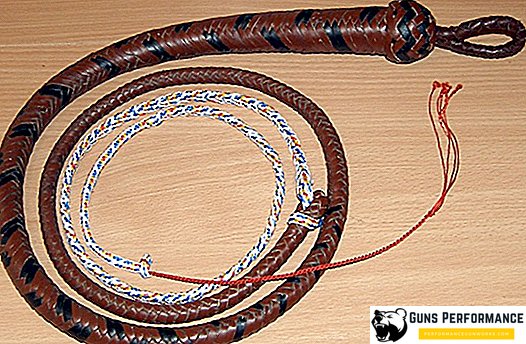
Arapnik and other whips can be used for self-defense on the street, they do not fall under the category of cold arms and can be carried freely with them. The main thing to remember is that only training will help you effectively use the whip in battle.





